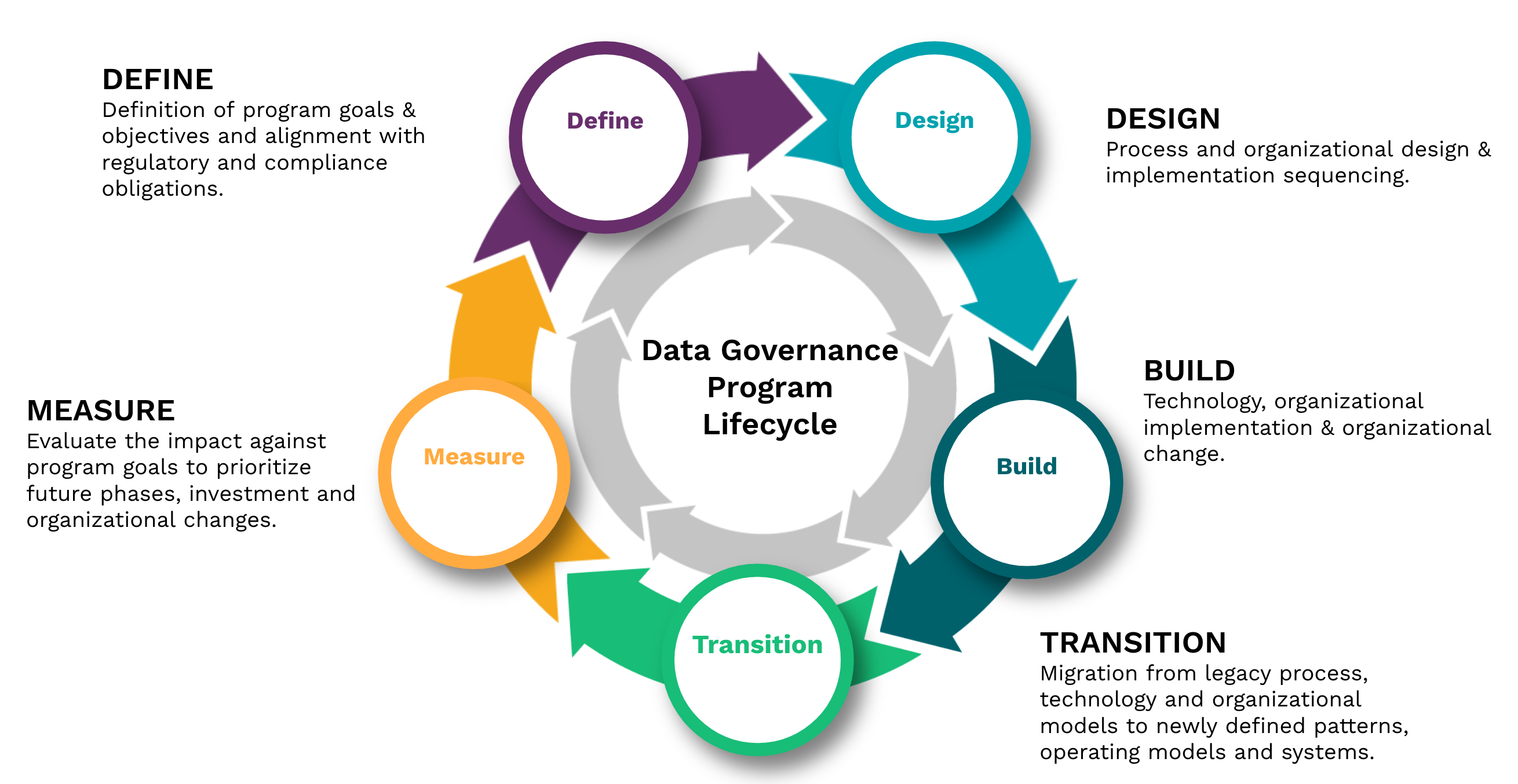A Closer Look at Data Governance Program Phases
In a previous post, I outlined how designing data governance programs can deliver business value. In this post, we’ll look in greater detail at the life cycle of a typical program.
Data governance programs thrive on established and clearly articulated goals, identified owners for specific program components and mapping of priorities to corporate objectives. Modern data governance programs include the retention and protection of data, data literacy for organizational enablement and compliance obligations specific to your industry and location.

The life cycle for data governance programs is five phases, with varying levels of duration based on organizational velocity and risk tolerance. The structure of your program and it’s working teams, stated goals for organizational maturity and method for distribution of information will dictate the speed your team can operate and the level of autonomy that is created and enabled for engineering teams.
- Define. This stage focuses on identifying key organizational gaps, prioritizing them for near term focus and identifying owners for researching possible solutions, deciding on approach and rolling out the new required capabilities.
- Design. This phase is focused on the design of process changes, measurements and technology necessary to address the priorities identified during the define phase.
- Build. As we move beyond design, we focus on implementation of the changes identified in the design stage. This stage can often be the most complicated for sequencing as we manage the lead time to develop new technologies, train staff on their implementation and usage.
- Transition. Oftentimes, complex organizational changes must be rolled out over an extended period of time. Utilizing older and newer methods in parallel while staff gain access and capabilities in new environments and operating models. This phase is that overlapping period where we often accept a period of instability or complexity knowing the reward on the other side of this phase is greatly improved capabilities and execution.
- Measure. This phase is focused on ensuring that the anticipated outcomes identified in the define phase are realized and the organization retrospectively evaluates the process and decisions to improve on future iterations and program execution.
On often encountered friction point for data governance programs is mis-alignment with the corporate planning cycle, leading to regularly asking for investment outside of normal channels and corporate prioritization routines. While Data Governance programs have their own phases and lifecycle, aligning with corporate planning cycles will amplify their impact by ensuring continuity with organizational priorities and the inclusion in corporate KPIs.
In highly distributed organizations and those with complex customer bases this process can run in parallel with different governance projects running at different paces. This overlap is complex to manage, but is the sign of a well functioning organization that is capable of scaling their capability delivery. The objective of this phased approach is to enable continuous improvement and rapid adjustment of data governance priorities to ensure alignment with shifting business needs.
In our next post in this series, we will discuss into the major components and functions of data governance programs and how they affect the structure of data governance teams. This will enable you to begin thinking about specific programs that will be most impactful for your organization.
Make sure to
subscribe to catch the next post
.

